Valextra’s unique Kyoto outpost combines traditional Japanese craft with Italian midcentury design
Housed in a former teahouse, the new Casa Valextra store in Kyoto debuts the Milanese leather goods label’s offering against a backdrop of iconic Italian design
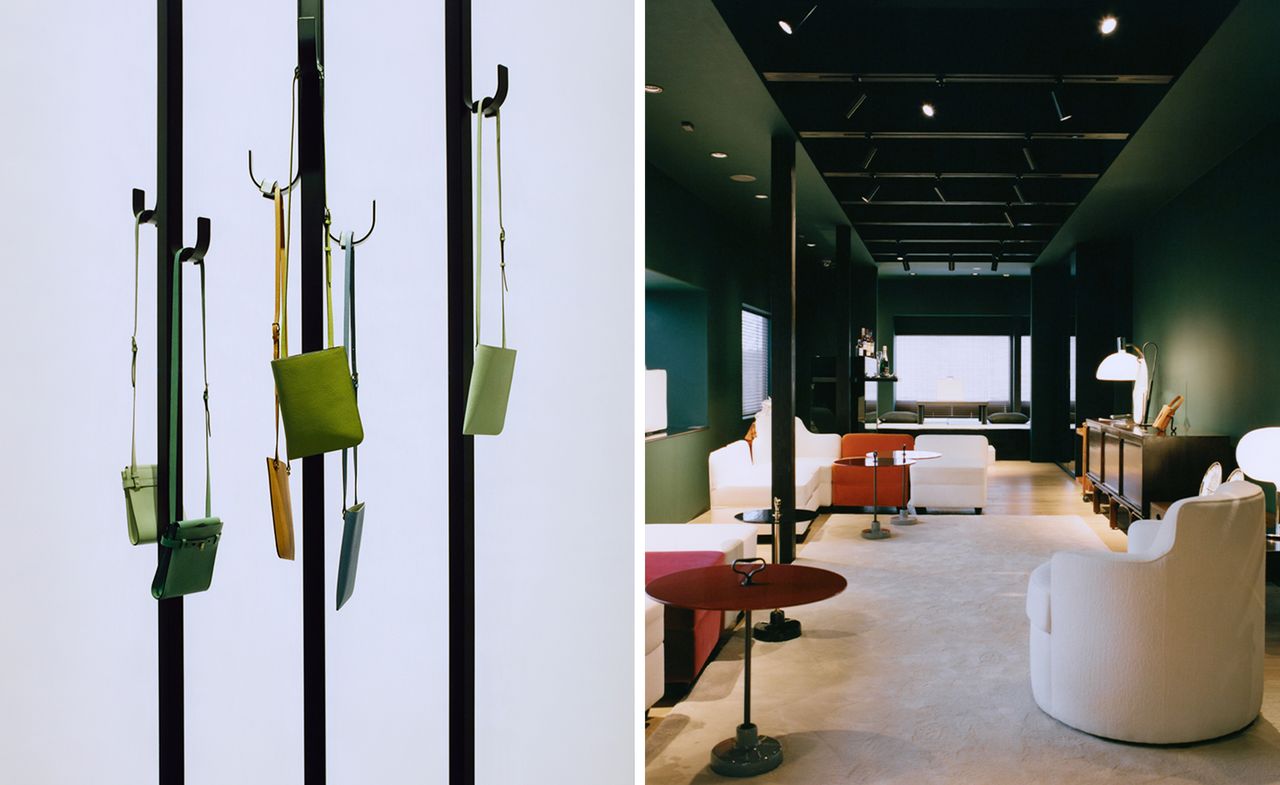
Den Niwa - Photography
Hanami-koji Street, in central Kyoto, is best known for the ancient rituals that go on behind the walls of its distinctive wooden machiya houses – namely, chanoyu, an intricate, centuries-old Japanese tea ceremony, here performed by geiko, the local term for geisha, and their apprentices. It has made Gion, the neighbourhood in which the street is located, one of the country’s most well-known hanamachi (geisha districts), evolving around the historic Yasaka Shrine where geiko would have once served tea to weary travelling pilgrims.
A new opening on the street, by Milanese leather goods brand Valextra, is infused with the neighbourhood’s tradition of hospitality. Casa Valextra occupies a former teahouse and is designed to provide a contemporary haven for travellers of all kinds. ‘We want people to feel at home,’ says Valextra CEO Xavier Rougeaux. ‘We are in the business of selling handbags that our customers have a strong intimacy with, so creating a similar sense of intimacy in the space is important – it reflects the product we are designing.’
Casa Valextra: inside the Italian leather house’s Kyoto outpost
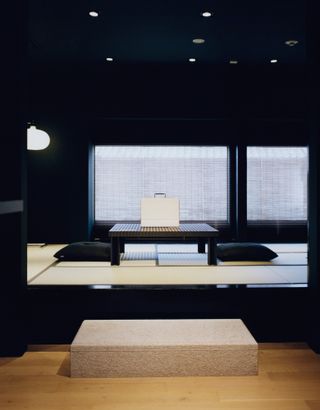
Furnishings that appear in the curated space include a ‘Kyoto’ table, designed by Gianfranco Frattini for Bottega Ghianda in 1974
As such, the two-storey building retains both the interior and exterior architecture of the traditional machiya, with Valextra instead making its mark through the exacting curation of the space, led by Milanese architecture studio Luciano Giorgi, aided by Milan gallerist Luisa Delle Piane. Here, midcentury Italian furniture and objects sits alongside an equally focused selection of the brand’s accessories offering.
‘We were intent on respecting the richness of Japanese culture and tradition,’ says Rougeaux. ‘At the same time, Valextra is a brand well known for its inherent links to Milan, which is renowned for its exceptional quality of design. Our goal was to create layers of discovery within the space, enhancing rather than transforming it to create a conversation between cultures, both geographical and design-orientated.’

An ‘AM/AS’ table lamp, designed by Franco Albini and Franca Helg for Sirrah in 1969
One early inspiration point for such an exchange was the ‘Kyoto’ table by Gianfranco Frattini, originally produced by Bottega Ghianda and now made by Poltrona Frau (winner of Best Woodcraft in the 2021 Wallpaper* Design Awards). With its distinctive chequerboard surface and slide-off counterpoise legs, it was first conceived in the 1970s after Frattini took a research trip to Kyoto, where he was inspired to create the table’s intricate interlocking wood joints. ‘It was the starting point of the conversation and is one of the key pieces in the space,’ says Rougeaux. ‘Here you have an Italian architect who was fascinated by Japan and designed a table that bears the name of Kyoto. It speaks perfectly to the synergy between the two cultures.’
Other furnishings in the space include the ‘engineered beauty’ of a metal coat hanger by BBPR, Frattini’s ‘Tree’ bookcase (used to display an arrangement of Valextra bags), Vico Magistretti’s ‘Lyndon’ suspension lamp, and Franco Albini and Franca Helg’s curved, chrome-plated ‘AM/AS’ table lamp. Rougeaux says he wants the space to reflect the ‘sobriety and splendour’ of a typical midcentury Milanese salon, albeit transplanted to a very different setting.
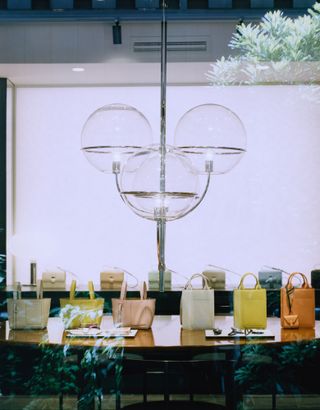
A ‘Lyndon’ suspension lamp, designed by Vico Magistretti in 1977, shines a light over a display of Valextra handbags
In keeping with the neighbourhood’s history of welcoming guests, the final component is a miniature reimagining of a typical Milanese bar, created in collaboration with Kyoto’s Ritz-Carlton outpost. ‘We always serve spritz and negroni sbagliato at our events, so we thought it would be a fun element. Working with a local bartender was important – we want it to be genuine, to work with someone able to bring experience that is the same level as what we do with our products.’ Later in the year, Maurizio Stocchetto, owner of Milan’s renowned Bar Basso, will take over the atrium space for a special residency (see Bar Basso and its regulars celebrated in a previous Valextra film).
Wallpaper* Newsletter
Receive our daily digest of inspiration, escapism and design stories from around the world direct to your inbox.
‘I want Casa Valextra to be more than just a shop, I want it to be experiential,’ says Rougeaux, noting that the Kyoto space also announces the launch of several new products, including a jewellery box, desk pads and a set of pencils created in collaboration with Faber-Castell. A new typeface by Studio Temp was also introduced for the opening. Used as a print on the curtained entranceway, which evokes traditional Japanese noren, it was inspired by the 1962 Valextra typeface created by graphic designer AG Fronzoni.
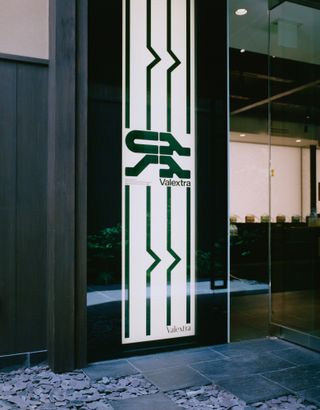
A new typeface conceived for the store by Bergamo-based design firm Studio Temp took inspiration from the 1962 Valextra typeface created by AG Fronzon
Valextra has long been known for its inventive retail spaces. In Milan, its Via Manzoni flagship saw a roll-call of designers, including Martino Gamper, Snarkitecture (which installed an all-white vision) and Kengo Kuma, take over the space before John Pawson created a permanent ‘intervention’ in 2019. Other stores around the world have been designed by Max Lamb, Neri & Hu, and Philippe Malouin (see his 2016 design for Valextra’s London Mount Street store). ‘If a space is functional, the experience is pleasing, and that to me is very much the mindset of Milanese design and the Valextra identity,’ says Rougeaux, noting that a sense of discreetness is key. ‘It’s not the same as being beautiful for the sake of being beautiful. There is always a sense of expressing the tension between aesthetic and functionality.’
As for the Kyoto store opening, Rougeaux sees it as a site of constant evolution, like the ever-changing Gion neighbourhood that surrounds it. ‘We want people to feel inspired – by design, by Japanese tradition, and by Milan and its icons,’ he says, explaining that the Casa Valextra space will be transformed every six months or so, with plans for an architectural and design library in the works for the next iteration. ‘It’s an ephemeral, living, breathing space.’
A version of this article appears in the October 2023 Style Issue of Wallpaper*, on sale now available in print, on the Wallpaper* app on Apple iOS, and to subscribers of Apple News +. Subscribe to Wallpaper* today
Jack Moss is the Fashion Features Editor at Wallpaper*, joining the team in 2022. Having previously been the digital features editor at AnOther and digital editor at 10 and 10 Men magazines, he has also contributed to titles including i-D, Dazed, 10 Magazine, Mr Porter’s The Journal and more, while also featuring in Dazed: 32 Years Confused: The Covers, published by Rizzoli. He is particularly interested in the moments when fashion intersects with other creative disciplines – notably art and design – as well as championing a new generation of international talent and reporting from international fashion weeks. Across his career, he has interviewed the fashion industry’s leading figures, including Rick Owens, Pieter Mulier, Jonathan Anderson, Grace Wales Bonner, Christian Lacroix, Kate Moss and Manolo Blahnik.
-
 Step inside this Upper East Side jewel box apartment
Step inside this Upper East Side jewel box apartmentThis radiant Lexington Avenue home is a harbinger of good things for the Upper East Side, and the latest focus of The Inside Story, our series spotlighting intriguing and innovative interior design
By Anna Solomon Published
-
 A new hilltop California home is rooted in the landscape and celebrates views of nature
A new hilltop California home is rooted in the landscape and celebrates views of natureWOJR's California home House of Horns is a meticulously planned modern villa that seeps into its surrounding landscape through a series of sculptural courtyards
By Jonathan Bell Published
-
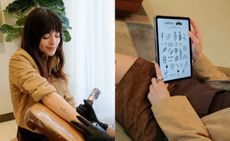 Is a tiny tattoo the best holiday souvenir? Kimpton Hotels think so
Is a tiny tattoo the best holiday souvenir? Kimpton Hotels think soIn partnership with Tiny Zaps, Kimpton Hotels is bringing city-inspired tattoo pop-ups to five U.S. locations
By Sofia de la Cruz Published
-
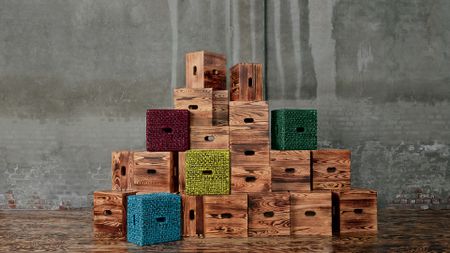 The best fashion moments at Milan Design Week 2024
The best fashion moments at Milan Design Week 2024Scarlett Conlon discovers the moments fashion met design at Salone del Mobile and Milan Design Week 2024, as Loewe, Hermès, Bottega Veneta, Prada and more staged intriguing presentations and launches across the city
By Scarlett Conlon Published
-
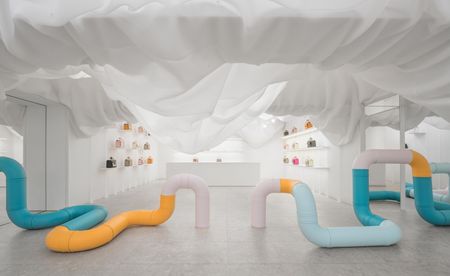 Valextra’s latest design collaboration is more than just a pipe dream
Valextra’s latest design collaboration is more than just a pipe dreamBy Rosa Bertoli Last updated
-
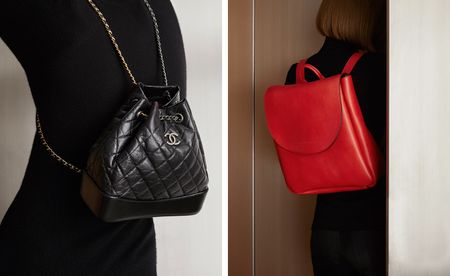 Hands free: we’re backing the latest designer bags
Hands free: we’re backing the latest designer bagsBy Laura Hawkins Last updated
-
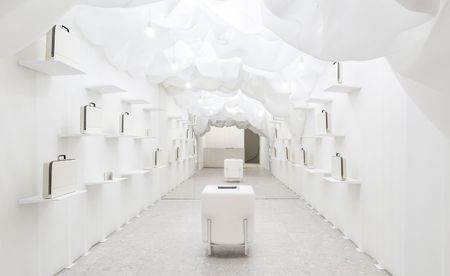 White out: Snarkitecture imagines a ‘colourless colour revolution’ for Valextra
White out: Snarkitecture imagines a ‘colourless colour revolution’ for ValextraBy Rosa Bertoli Published
-
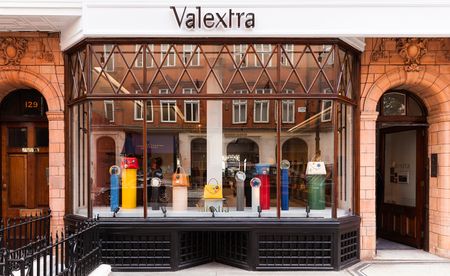 A domestic dream house fashioned for Valextra’s London store
A domestic dream house fashioned for Valextra’s London storeBy Rosa Bertoli Published